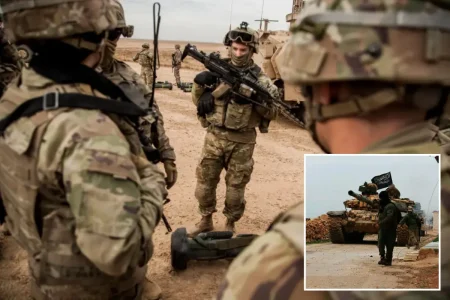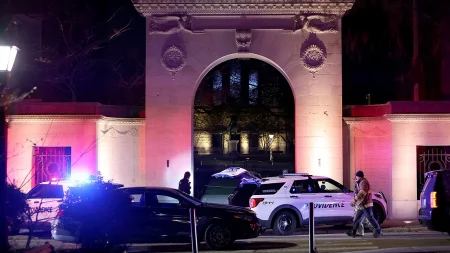Trump Buoyed by Israel-Hamas Deal, While Zelensky Pushes for Military Aid to Bring Russia to Negotiating Table
In a striking contrast of international diplomatic dynamics, former President Donald Trump has found renewed political energy following the breakthrough ceasefire agreement between Israel and Hamas, while Ukrainian President Volodymyr Zelensky continues his urgent campaign for enhanced military support to force Russia into meaningful peace negotiations. These parallel developments highlight the complex web of global conflicts and the different approaches to resolution being pursued by key international figures.
Trump Finds Political Momentum in Middle East Peace Efforts
Former President Donald Trump has experienced a notable surge in political momentum following the announcement of the ceasefire agreement between Israel and Hamas. Sources close to Trump indicate that he views the development as validation of his administration’s approach to Middle East diplomacy, which prioritized unconventional strategies and direct engagement with key regional players. “The path to peace in the Middle East was always going to require bold thinking and a willingness to break from failed policies of the past,” remarked a former Trump administration official who requested anonymity to speak candidly about the former president’s current mindset.
Trump’s renewed energy comes at a critical juncture in American politics, with the former president continuing to wield significant influence within the Republican Party. Political analysts suggest that Trump sees the Israel-Hamas deal as evidence that his foreign policy vision—often criticized as unpredictable and disruptive by opponents—can yield concrete results. “There’s a narrative developing that the current administration has built upon foundations laid during the Trump years, particularly regarding the Abraham Accords,” noted Dr. Elaine Kamarck, a senior fellow at the Brookings Institution. “Whether accurate or not, this perception provides Trump with a compelling foreign policy talking point that resonates with his base and potentially appeals to moderate voters concerned about global stability.”
The Complex Dynamics of the Israel-Hamas Agreement
The recently negotiated ceasefire between Israel and Hamas represents one of the most significant diplomatic breakthroughs in the long-running conflict. The agreement, brokered through intensive international mediation, establishes a framework for prisoner exchanges, humanitarian aid delivery to Gaza, and a temporary cessation of hostilities. Regional security experts characterize the deal as precarious but potentially transformative if it can hold long enough to build momentum toward more comprehensive negotiations.
“What we’re seeing is a fragile but critically important first step,” explained Dr. Shira Efron, a Middle East policy specialist at the Israel Policy Forum. “The sustainability of this agreement depends on multiple factors: the compliance of all parties, the effectiveness of implementation mechanisms, and the ability to expand the scope of discussions beyond immediate security concerns to address underlying grievances.” The international community has broadly welcomed the development, though many observers remain cautious about its long-term prospects. The agreement has also sparked intense debate within Israeli and Palestinian societies, with hardliners on both sides expressing skepticism about the concessions made. This internal political tension underscores the challenging path ahead for transforming a temporary ceasefire into lasting peace.
Zelensky’s Strategic Push for Advanced Weaponry
In stark contrast to the cautious optimism surrounding developments in the Middle East, Ukrainian President Volodymyr Zelensky has intensified his campaign for sophisticated Western weapons systems, which he argues are essential to force Russia to engage in legitimate peace negotiations. During recent diplomatic engagements across European capitals and in virtual addresses to international forums, Zelensky has articulated a clear strategic vision: Ukraine requires sufficient military capability not to defeat Russia outright, but to create conditions where continued conflict becomes untenable for Moscow.
“We need these weapons not just to defend, but to demonstrate to Russia that a military solution is impossible,” Zelensky stated during a recent press conference in Kyiv. “Only when Putin understands that his military objectives cannot be achieved will genuine negotiations become possible.” The Ukrainian president’s requests have focused particularly on advanced air defense systems, long-range precision strike capabilities, and enhanced electronic warfare equipment—technologies that military analysts suggest could neutralize Russia’s remaining advantages on the battlefield. General Valery Zaluzhny, Commander-in-Chief of the Ukrainian Armed Forces, reinforced this position in a recent strategic assessment, noting: “Our ability to defend critical infrastructure while simultaneously conducting counter-offensive operations is directly tied to the sophistication and quantity of weapons systems provided by our partners.”
The Geopolitical Chess Game Between Ukraine and Russia
The ongoing conflict between Ukraine and Russia has evolved into a complex geopolitical chess match with significant implications for global security architecture. As the war approaches its third year, both sides are calibrating their strategies based on battlefield realities, international support, and domestic political considerations. For Zelensky, the calculation appears straightforward: demonstrate to Putin that the costs of continuing the war exceed any potential benefits, thereby creating leverage for negotiations that respect Ukraine’s sovereignty and territorial integrity.
Russian President Vladimir Putin, meanwhile, seems to be pursuing a strategy of attrition, betting that Western resolve will eventually fracture under the strain of prolonged economic and energy disruptions. “Putin believes time is on Russia’s side,” observed Dr. Fiona Hill, former senior director for European and Russian affairs at the U.S. National Security Council. “His gamble is that European solidarity will erode as domestic pressures mount, particularly if the conflict extends through another winter with its attendant energy challenges.” This assessment is shared by many security experts, who point to Russia’s mobilization of its economy for prolonged conflict and its diplomatic efforts to strengthen relationships with China, Iran, and other nations resistant to Western pressure. The resulting dynamic has created what military strategists describe as a “commitment trap” for both sides—neither can afford to back down without achieving core objectives, yet a decisive military victory remains elusive.
International Response and Future Implications
The international community’s response to these parallel crises reveals evolving priorities and challenges in global governance. Western powers have attempted to balance support for Ukraine with efforts to prevent broader escalation, while simultaneously working to stabilize the volatile Middle East situation. This dual focus has strained diplomatic and military resources, particularly for European nations grappling with economic pressures and political polarization.
The contrasting trajectories of the Israel-Hamas and Russia-Ukraine conflicts also illuminate fundamental questions about conflict resolution in the 21st century. While the Israel-Hamas ceasefire emerged from a combination of external pressure, mutual exhaustion, and recognition of a military stalemate, the Ukraine conflict shows little sign of reaching a similar inflection point. “What we’re witnessing is a test case for whether traditional concepts of deterrence and coercive diplomacy still function in contemporary geopolitics,” explained Ambassador William Taylor, former U.S. envoy to Ukraine. “The outcomes of these conflicts will shape our understanding of how wars end in an era of nuclear weapons, economic interdependence, and information warfare.” As world leaders navigate these complex challenges, the implications extend far beyond the immediate conflicts to the future of international order, the credibility of security commitments, and the effectiveness of multilateral institutions in managing global crises. For citizens in conflict zones and peaceful nations alike, the resolution of these tensions will determine the contours of security and stability for generations to come.









